
ASTM C273
Sandwich Core Shear Fixture


 |
|---|
 |
 |
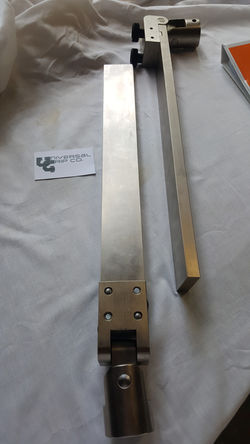 |
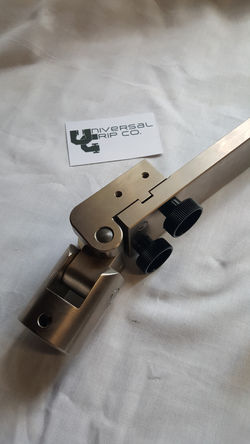 |
 |
 |
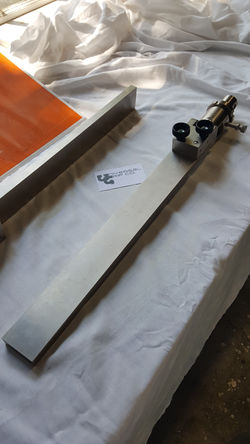 |
 |
 |
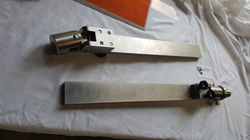 |
 |
 |
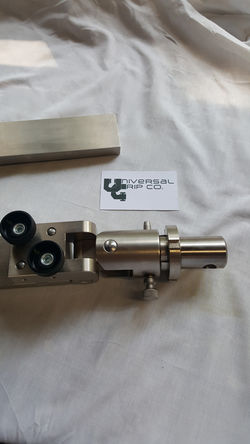 |
 |
 |
Standard Test Method for Shear Properties of Sandwich Core Materials - PDF
ASTM C273 outlines the procedure for determining the shear strength and shear modulus of core materials used in sandwich panels.
Sandwich panels are widely used in aerospace, automotive, marine, and construction industries because they offer excellent stiffness-to-weight ratios. The core material (usually foam, honeycomb, or balsa wood) must have sufficient shear properties to carry loads between the two face sheets.
This article explains the purpose of ASTM C273, the required equipment, the general testing procedure, and other related ASTM standards.
Purpose of ASTM C273
The main objectives of ASTM C273 testing are to:
-
Measure the in-plane shear strength and shear modulus of core materials.
-
Evaluate the performance and durability of sandwich panel cores under mechanical loads.
-
Compare different core materials for product development, quality control, and material specification.
-
Identify material defects or degradation affecting shear performance.
Shear properties are critical because the core must resist shear forces that tend to slide one face sheet relative to the other under bending loads.
Equipment Required for ASTM C273 Testing
Testing according to ASTM C273 requires the following equipment:
-
Universal Testing Machine (UTM):
-
Equipped with a load cell appropriate for the expected shear forces.
-
Capable of applying a controlled displacement rate, typically 0.05 inches per minute or 1.3 mm/min.
-
-
-
A specialized fixture designed to load the specimen in pure shear.
-
Often consists of two rigid plates bonded to the specimen, ensuring uniform load application across the core.
-
-
Specimen Preparation Equipment:
-
Saw, razor blade, or other cutting tools for preparing the test specimen.
-
Adhesive for bonding specimen to fixture plates.
-
-
Measurement Tools:
-
Calipers or micrometers for measuring specimen dimensions (thickness, width, bonded area).
-
-
Environmental Chamber (optional):
-
For testing under controlled temperature and humidity conditions, if specified.
-
Specimens
-
Specimens are typically rectangular blocks of core material.
-
A rigid plate (often aluminum) is bonded to the top and bottom of the specimen using a high-strength adhesive.
-
Dimensions are specified by the standard, but typical sizes are around 2 inches wide by 5 inches long and core thickness as manufactured.
-
Specimens must be properly aligned to ensure pure shear loading.
General Test Procedure for ASTM C273
-
Specimen Preparation:
-
Cut core specimens to the specified size.
-
Bond rigid loading plates to the specimen’s top and bottom surfaces using an appropriate adhesive.
-
Allow adhesive to fully cure before testing.
-
-
Mounting:
-
Attach the specimen to the shear fixture using mechanical grips or bolts through the loading plates.
-
-
Testing:
-
Apply a tensile force parallel to the bond lines at a constant displacement rate.
-
Ensure that the load is transmitted evenly to produce pure shear in the core material.
-
-
Data Collection:
-
Record the load and displacement throughout the test.
-
Identify the maximum load (for shear strength) and plot load vs. displacement to determine shear modulus from the slope in the elastic region.
-
Results and Reporting
An ASTM C273 report typically includes:
-
Material type, density, and manufacturing details of the core.
-
Dimensions of the test specimen.
-
Adhesive type and curing conditions.
-
Maximum shear stress (shear strength).
-
Shear modulus (calculated from the slope of the linear region of load-displacement curve).
-
Type and mode of failure (adhesive failure, cohesive failure, facing failure, etc.).
-
Environmental conditions during testing (if applicable).
Related ASTM and Similar Standards
Several ASTM standards are closely related to ASTM C273, often used to fully characterize sandwich panel materials:
-
ASTM C297 – Standard Test Method for Flatwise Tensile Strength of Sandwich Constructions:
Measures tensile strength perpendicular to the faces of a sandwich structure. -
ASTM C365 – Standard Test Method for Flatwise Compressive Properties of Sandwich Cores:
Measures compressive properties of the core material. -
ASTM C393 – Standard Test Method for Flexural Properties of Sandwich Constructions:
Measures bending strength and core shear stress during flexural loading. -
ASTM C394 – Standard Test Method for Shear Fatigue of Sandwich Core Materials:
Measures the fatigue performance of core materials subjected to repeated shear loading. -
ASTM D732 – Standard Test Method for Shear Strength of Plastics by Punch Tool:
Measures shear strength of plastic materials, sometimes used for rigid polymer core evaluation. -
ASTM D905 – Standard Test Method for Strength Properties of Adhesive Bonds in Shear by Compression Loading:
Focuses on adhesive bonds but is related when considering core-to-face bond performance.
Applications of ASTM C273 Testing
ASTM C273 shear testing is essential in industries where sandwich structures are used, such as:
-
Aerospace (aircraft fuselages, control surfaces)
-
Marine (boat hulls, decks)
-
Automotive (lightweight vehicle panels)
-
Wind energy (turbine blades)
-
Construction (insulated panels, architectural structures)
By understanding the core’s shear properties, engineers can better design structures for maximum strength and durability while minimizing weight.
